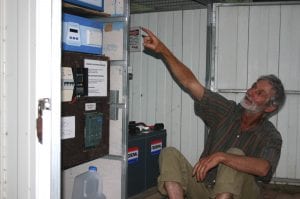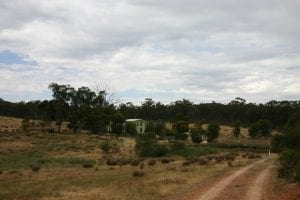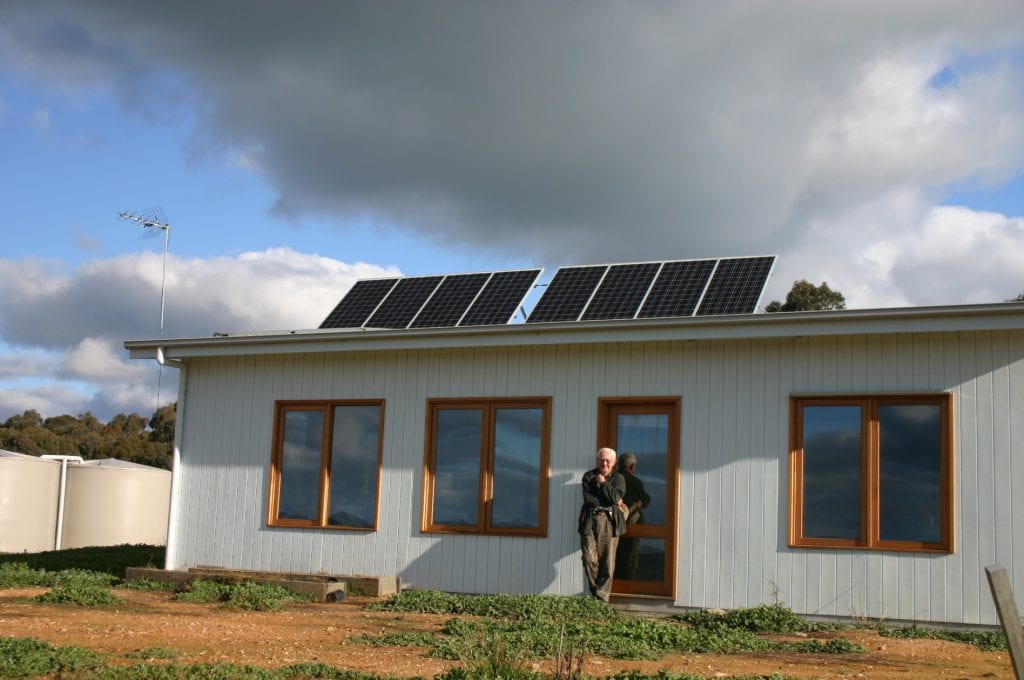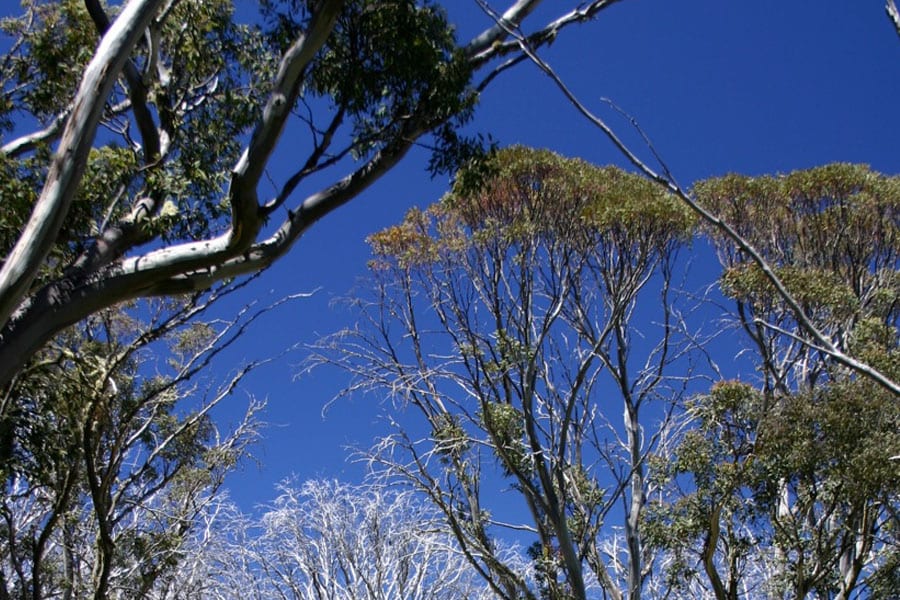BUILDER Lee Hunter knew central Victoria had the ingredients to create a sustainable lifestyle and build a straw and mud brick house.
Lee’s 48ha Strathlea property has dams, self-replacing native forest to provide wood for fuel and the area is a goldmine for his favorite building material – dirt.
He bought the land in 2003 and by 2006 he had built his two storey compressed straw modular panel and internal mud brick wall house.
With its own solar energy and waste management systems it is set well back from the road near two dams fringed with gum trees.
An upper floor has a spacious bedroom with an external deck and a variety of different size double glazed windows for the views and natural light.
On the ground floor the house has doors and double glazed windows on both north and south facing walls for cross ventilation.
Doors and windows on north and south walls allow natural ventilation
There are quirky design features like the small staircase leading to the upstairs bedroom and the Stanley combustion stove that dominates the main living area. The stove is also a water heater.
A galley kitchen off the main living room has a five-burner oven and a refrigerator, both on LPG gas.
At the eastern end of house are the wet areas of laundry, toilet and bathroom.
An A and A Company worm farm waste disposal system takes all Lee’s grey water, sewage and organic waste and converts it into a liquid fertiliser that is dispersed via underground pipes.
Electricity comes from four 165 watt solar roof panels connected to a Selectronic Sine Wave power inverter and he stores electricity in four six volt Federal deep cycle batteries. Living self-sufficiently in a recycled house

With an estimated maximum power daily load use of about 600 watts Lee installed a modest solar array but has a 1.6 kilowatt inverter so he can increase his power.
Building industry contacts told him about Ortech Industry’s modular compressed straw wall and ceiling building panels so he began to investigate.
Durra panels made of wheat or rice straw
Ortech’s website states its Durra panels are made of wheat or rice straw fibres.
Durra panels manufacturing process combines extreme heat and compression in a dry extrusion process to form the panel’s rigid core.
A natural polymer in the straw is released during the process and a water-based PVA glue is used to enclose the core with a durable recycled paper liner. The company says this process produces zero toxic waste.
Durra panels are load bearing but the house has also been made stronger with metal straps attached to the uprights that hold the panels that are tied into the mud bricks.
Inside Lee’s home most of the exposed walls are mud brick to take advantage of mother earth’s natural insulation properties.
Clay and rubble materials for the mud bricks was sourced from a nearby town called Bealiba and were bagged with mud from his dam.
To bag the internal walls Lee wet the mud bricks then applied the mud render with a brush. How to make a Straw Bale house and get insulated
Looking at the home’s walls from the inside to the outside, first comes the mud bricks that weigh 17 kilograms each and measure 37cm long, 25cm wide and 11cm deep.

Behind the mud brick wall is a 40mm cavity and then the Durra panels. The panels slot into H-section metal rails on each side and sit in a U-section rail at footing level.
The Durra panel is blanketed with builder’s foil insulation wrap and the exterior part of Lee’s house is a rendered Blue board*.
On the roof is corrugated Colorbond metal sheets. Below thesheets sits builder’s insulation foil wrap then 3.5 rated insulation batts in the ceiling cavity. Durra panels form the internal ceiling.
Gable end walls upstairs are the same construction as downstairs except for the rear wall that has been finished with plasterboard.
Outside it was 30 degrees celsius but inside it was 20 degrees
When I arrived at Lee’s house it had been a 30 degree plus Celsius day but inside Lee’s home the temperature consistently hovered around 20 degrees.
“I don’t know what insulation rating is but I know it’s usually between 10 and 12 degrees cooler in here on warm days,” Lee said.
Lee has been in the building trade since he began a five-year apprenticeship as a 16-year-old when he learned to build conventional homes.
After living in northern NSW he learned from people sharing his alternative lifestyle how to use mud to build bricks for houses.
More research ultimately led to him make his own mud bricks and build a 6 metre by 2 metre cabin with a 2 metre ceiling at Ruffy in the Strathbogie Ranges.
“I would have to say mud is a valuable building material because it is available to everyone,” Lee said.
“It’s in the ground if you have got the backbone to use it – it’s cheap, it’s everywhere.”
*Blue board is a cement sheet with a blue water resistant film on it.





